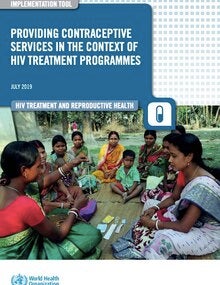Overview
The importance of access to contraceptive care for women and adolescent girls, including those living with HIV, is well established. By enabling women and adolescent girls to exercise their right to choose and control whether to have children and when and how many, use of voluntary, effective contraception promotes positive educational and economic outcomes for women and girls and is key to achieving gender equality, empowering women and reducing poverty. Using contraception also leads to improved infant and child health outcomes by preventing morbidity and mortality related to unintended pregnancy. For women and adolescent girls living with HIV, in addition to the above, using effective contraception reduces the mother-to-child transmission of HIV by preventing unintended pregnancies and enabling the planning and safer conception of desired pregnancies with optimal maternal and child health outcomes.
The publication provides information on contraceptive options and choice, the medical eligibility criteria for different methods of contraception for women and adolescent girls living with HIV and using antiretroviral therapy, a summary of the comparative effectiveness of contraceptive methods and contraceptive considerations at different stages of a woman’s life-course.
|

